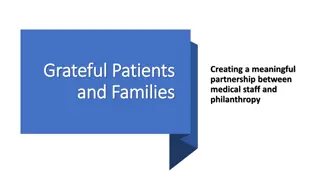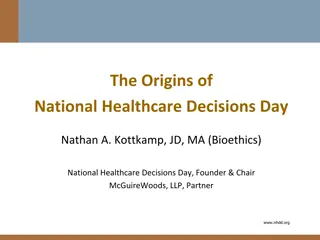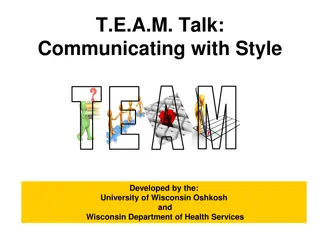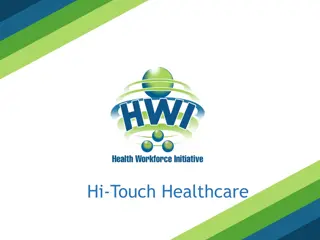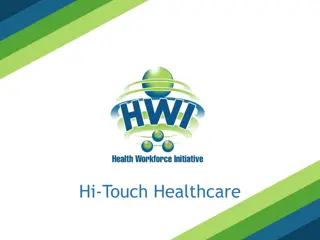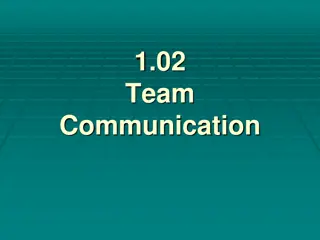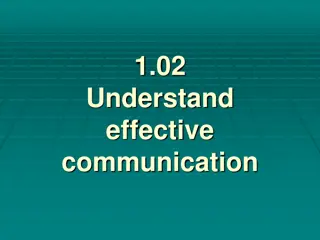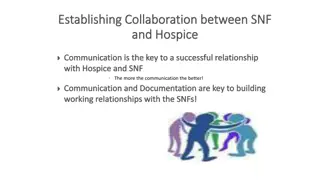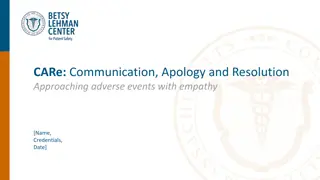Enhancing Communication and Collaboration in Healthcare
Exploring the importance of bridging the gap between medical and spiritual care, this presentation highlights the challenges faced by chaplains in engaging with medical professionals. It emphasizes the value of confident chaplaincy in promoting understanding and aligning care with patients' values, ultimately enhancing overall patient well-being.
Download Presentation

Please find below an Image/Link to download the presentation.
The content on the website is provided AS IS for your information and personal use only. It may not be sold, licensed, or shared on other websites without obtaining consent from the author.If you encounter any issues during the download, it is possible that the publisher has removed the file from their server.
You are allowed to download the files provided on this website for personal or commercial use, subject to the condition that they are used lawfully. All files are the property of their respective owners.
The content on the website is provided AS IS for your information and personal use only. It may not be sold, licensed, or shared on other websites without obtaining consent from the author.
E N D
Presentation Transcript
The Words We Use Bridging the Gap Between Medical and Spiritual Care with Confidence, Respect, and Compassion Presented at the 2019 Caring for the Human Spirit Conference by Priscilla Minkin, MA, MEd, APBCC, and Patsy Fortney, CC Palliative Care Chaplains Central Vermont Medical Center Berlin, Vermont
What the Literature Tells Us Communication between chaplains and physicians is rare. One study found that only 5.6% of chaplains communicated with physicians after patient encounters.1 Chaplains are often invisible and not always fully integrated within the multidisciplinary team. 2 Only 10% of attendings, 6% of fellows, and 17% of APPs consult a chaplain when a patient is recovering from a serious illness in the ICU.3 1. Choi Philip J, Farr A. Curlin, Cox Christopher E. The Patient is Dying, Please Call the Chaplain : The Activities of Chaplains in One Medical Center s Intensive Care Units. Journal of Pain and Symptom Management, 50 (4), October 2015. 2. Timmins F, et al. The Role of the Healthcare Chaplain: A Literature Review. Journal of Health Care Chaplaincy, 24: 87-106, 2018. 3. Choi Philip J, Chow Vinca, et al. Intensive Care Clinician s Views on the Role of Chaplains. Journal of Health Care Chaplaincy, published online: December 5, 2018.
Objective 1: List concrete values of confident chaplaincy to clinicians, patients, family members, and chaplains. Confidence Reimagined Confidence grows from an honest recognition of, and accounting for, our own reactions in the moment. Confidence gives us a solid place to stand from which we can be open to the realities of others. In this way it breeds, not pride, but humility. A confident chaplain is not territorial and does not push back, have an agenda, or need to be right. The question is not: Am I allowed in their space? Rather, we need to ask ourselves: Where do I stand in relation to my own authority? Medical team members share our desire to be caring and compassionate, as well as our insecurities. From a place of confidence, we can ask ourselves: What can I do to uplift this [surgeon, technician, cardiologist] in their role? How might I support them?
The Value of Confident Chaplaincy to the Medical Team Translating patients experiences, values, and where life holds meaning helps the medical team to better understand the person being treated and to align care with patients values. Spiritual care chart notes can guide physician conversations about goals of treatment. All providers, medical and spiritual, can experience less isolation and greater resilience when they work in an environment of trust and collegiality.
Questions to Elicit Values What is your understanding of why you re here? When thinking about the future, what is most important to you? Where does life hold meaning? What causes you to smile? What gives you strength? What nurtures your spirit? What gives you hope? What worries you? What frightens you? Have you had experience with serious illness before? A loved one dying? Tell me more. Anything else?
The Value of Confident Chaplaincy to Patients and Family Members Confident chaplains explore emotions around serious illness to help patients and their families voice feelings, desires, and concerns. Confident chaplains can help patients and families communicate concerns, questions, and wishes to the medical team. Chaplains who are familiar with medical terminology can clarify with patients and families what they are hearing from the medical team. Chaplains do not give medical information. Rather, they help patients and families process medical information, they assess understanding and values, and they help the medical team align decisions with values and dignity.
The Value of Confident Chaplaincy to Chaplains Confidence is the primary quality that opens the door to chaplains becoming full-fledged members of the medical team. The feeling of belonging and of being respected is an antidote to the isolation chaplains often experience among their medical colleagues. We all need each other and respect and appreciation from the medical team is spiritual care for us! Confidence helps us to avoid comparing ourselves to other chaplains and feeling territorial. This builds trust and allows us to work more easily with others.
Objective 2: Describe specific actions that can increase chaplain confidence and, by extension, the relevance of chaplains on the medical team. Write chart notes that are helpful to the entire IDT Have (and use) an elevator speech Go where they go Ask how best to support them Learn and use medical terminology Affirm their work Build relationships with staff Attend rounds regularly, and speak up (respectfully) Report to them in person Listen to them Ask for their help Create and distribute a spiritual care brochure Model quality spiritual care everywhere
Objective 3: Analyze the emotional content inherent in confident, respectful communications between chaplains and the medical team, and have five questions and statements you can use immediately with medical staff. I know this patient well. Would it be helpful if I went in with you? That would be wonderful if [she could get back to her baseline/ be weaned off high-flow oxygen/ etc.]. Do we know anything about her goals of care or values? Am I hearing we re worried this patient could die? I know we ve said it, but I think it would help the patient and his family to say it again. May I ask: how sick is the patient? The family told me they trust you completely.
Two things to remember: The primary value of chaplain presence that clinicians name is the ability to hold the big picture (i.e., of patients and families emotions, values, and beliefs). This is challenging work. We need each other.
Thank you so much for sharing this presentation with us. We would love to hear about ways you have built your confidence, as well as statements and questions that have helped you become integrated into the medical team. We can be reached at: Priscilla.Minkin@cvmc.org and Patsy.Fortney@cvmc.org







